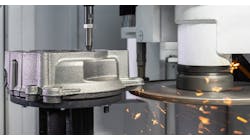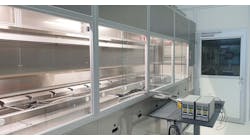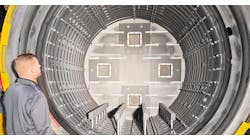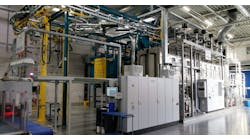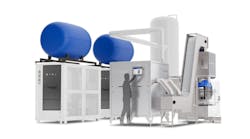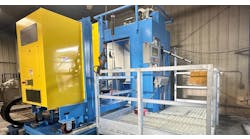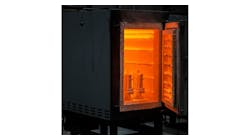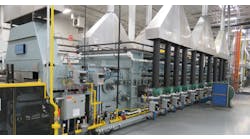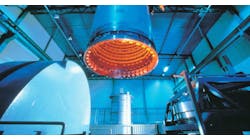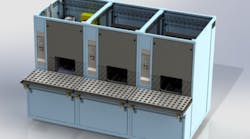Godfrey & Wing reported it shipped and installed its first HVLV vacuum impregnation system in China for Tier 1 supplier of automotive diecastings, at Dalian. It said the front-loading vacuum impregnation machine, manufactured in the U.S., would treat four-cylinder engine blocks and transmission components for U.S. and European automakers operating in China.
The High-Value/Low-Volume (HVLV) system that Godfrey & Wing developed to seal cast parts uses a dry vacuum and pressure processing sequence to overcome porosity. It processes one cylinder block per cycle in a lean and ergonomic operation that requires no overhead cranes, equipment pits, or platforms. It occupies 84 square feet, with no special infrastructure. It can be installed anywhere in a facility, according to the developer.
Godfrey & Wing explained that its Chinese client is a high-volume supplier of engine blocks to General Motors Corp, and was assigned to develop a strategy for sealing the castings to match the 1 cc/min leak standard. “Outsourcing was not an option,” according to Godfrey & Wing, “as the OEM wanted to reduce shipping and inventory costs while eliminating the risk associated with outside processing (damage and contamination), not to mention the unpredictable recovery of castings.”
Based on Godfrey & Wing’s impregnation technology, and the company’s own experience with GM’s leak-test standards for powertrain components, they sought a proposal from G&W for the process equipment.
Hits Target for Space, Productivity
Ultimately, the diecaster chose Godfrey & Wing’s HVLV vacuum impregnation system, in particular because it matched their space and throughput requirements. The supplier also noted it would be the only equipment necessary to impregnate each casting efficiently and effectively.
“Every leaking part processed through the HVLV was recovered — a 100% pass rate at leak testing. The parts were not contaminated and did not experience any damage,” according to the diecaster’s engineering manager.
“We are confident that the HVLV will continue to produce these same excellent results in every cycle, every day,” he continued.
Godfrey & Wing’s HVLV vacuum impregnation system uses patented Continuous Flow Impregnation (CFi) dry vacuum and pressure (DVP) technology to process up to 15 cycles per hour.
According to the developer, HVLV reduces the time to impregnate by approximately 80% compared to batch impregnation systems, and will ensure “near 100% pressure-tight parts.”
HVLV conserves resources and provides repeatable, precise, and clean impregnation processing. The three-module unit is simple to operate, and its readily accessible components allow for easy installation and preventative maintenance.
In addition to automotive suppliers, HVLV is applicable for manufacturers military, aerospace and general engineering products that require high-quality low-porosity castings.
